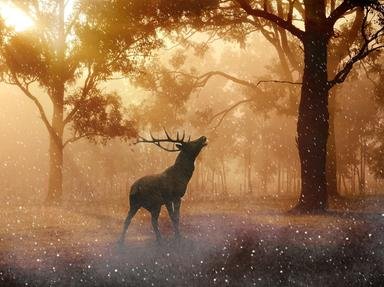Quiz Answer Key and Fun Facts
1. Also known as cattle chamois or gnu goat, the takin is a relatively large, mountain-dwelling animal. It is also the national animal of which small Asian country, famous for pioneering the idea of gross national happiness?
2. Another mountain-dwelling wild goat, the markhor is a striking animal. What distinctive shape (much loved by wine drinkers) are its horns?
3. The chamois, which gave its name to a kind of soft leather, is one of the best-known members of the goat-antelope subfamily. In the mountains of which continent would you find one?
4. Though it has been introduced in other parts of the continent, the European mouflon was originally found only on two Mediterranean islands - one of which is associated with a famous general. What is this island's name?
5. This large, thick-coated animal has a rather misleading common name. How is this strong-smelling denizen of the Arctic regions known?
6. Serows are medium-sized goat-antelopes native to central and eastern Asia, whose scientific name might remind you of which rather obvious zodiac sign?
7. The Himalayan tahr dwells among the world's highest mountains. What beautiful, long-tailed carnivore is the main predator of this wild goat?
8. All living specimens of the majestic Alpine ibex, now found in most of the European Alps, descend from the stock in the Gran Paradiso National Park - located in which country?
9. The Rocky Mountain goat is a familiar sight for visitors of the mountain regions of western North America. What colour is its thick, woolly coat?
10. With a scientific name meaning "sand goat", which part of the world do you think the Barbary sheep is a native of?
Source: Author
LadyNym
This quiz was reviewed by FunTrivia editor
rossian before going online.
Any errors found in FunTrivia content are routinely corrected through our feedback system.
